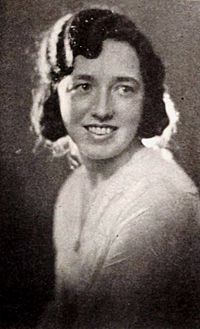Edward Stevenson was born in Pocatello, Idaho where he had stayed until leaving for California for chronic respiratory problems at the age of 16. While in Hollywood High School, neighbor Lova Klenowsky (and cousin to silent actress Gloria Swanson) introduced him to costume designer "Andre-Ani." From there he began as a sketch actress for Norma Talmadge Productions while occasionally being able to create his own work, one of his favorites being a gown for Barbara La Marr in "The White Moth" (1924).
Meeting "Andre-Ani" came to his advantage in 1925 when the world famous designer appointed Stevenson as his assistant in designing for Greta Garbo. Then two years after that, Stevenson found himself at Fox then in 1928 at First National by way of actress Louise Fazenda. At First National, he was given an even bigger contract and eventually became the head of the costume department until the studio was bought out by Warner Bros. in 1930. Close to a law suit with the new conjoined studios, Stevenson left after his contract expired having not received screen credit for his work.
For four years, he ended up working Columbia, Hal Roach Studios while also opening Blakely House where stars and locals both could buy his clothes. Towards the end of those years, Stevenson found himself as an assistant for Bernard Newman at RKO, who was already starting to feel the high demanding pressure of designing for Hollywood. Newman left for New York but left a recommendation for his assistant to take over the position and Stevenson was serendipitously promoted.
At RKO for the next 14 years, he would design for classics such as "Citizen Kane" (1941) and "It's a Wonderful Life" (1946) among many others. When his contract expired and still disappointed with how Howard Hughes managed the costume department, Stevenson left RKO in 1950 although occasionally coming back for the next 6 years. After a well deserved break as well as time for cataract surgery, an old friend from RKO came calling to help with her TV show. Stevenson would find himself employed by Lucille Ball until his death in 1968. In 1960, he finally won his Oscar for Ball's "The Facts of Life" and sharing the honor with colleague Edith Head. Edward Stevenson would end up passing away at the age of 62 of a coronary while fabric shopping on La Cienega Boulevard.
 |
| Maureen O'Hara in "A Sword's Point" (1952) |
 |
| Lucille Ball in "I Love Lucy" |
| Gregory Peck in "David and Bathsheba" (1951) |















